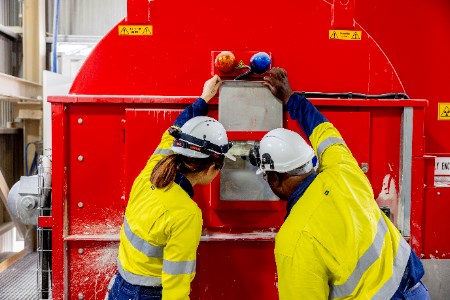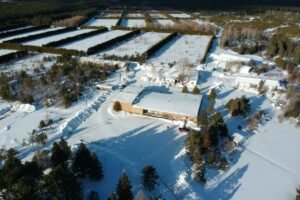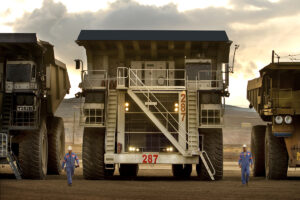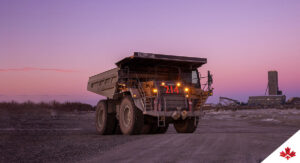QMAG Pty Ltd, part of the Refratechnik group, owns the Kunwarara deposit of cryptocrystalline magnesite – one of the world’s largest – located in Central Queensland, Australia. It mines the ore using and open-pit method and processes it into high quality fused (FM), dead burnt (DBM), and caustic calcined (CCM) magnesia products at the nearby Parkhurst facility. It supplies the refractory, chemical, agricultural, environmental, and hydrometallurgical sectors with its high-quality magnesia products.
QMAG was an early adopter of sensor-based ore sorting, and is in fact the longest continuous user of this technology in Australia, having installed its first Ultrasort laser machine in 1994 and a second one a few years later. The ore was fed through either a dense media separation (DMS) system, using drum and cyclone separators, then the Ultrasort sorters removed the sandstone, gravel, and dark coloured dolomite from the product.After over 22 years in operation, the Ultrasort sorters were becoming antiquated and could no longer be supported. “It came to a point where the Ultrasort sorter was removing the dolomite, but the background lime was still quite high, and this was not giving us the best opportunity to create the product that was required by the Parkhurst processing plant,” explains Josh Dawson, Production Superintendent at the QMAG mine. A new solution was needed, and TOMRA suggested its X-Ray Transmission technology.In 2016, a TOMRA XRT sorter was installed as a stand-alone plant on site. “It was a trial that management at the time got very excited about: they could see that this could be the future moving forward,” says Josh Dawson. “It was a success story: we could now process very high calcium content material that we couldn’t do as effectively with the DMS or laser sorting equipment. This gave the ability to produce much lower calcium content magnesite grades suitable for our customers,” adds Alex Padya, Process Engineer.In view of these results, in 2018 the XRT machine was moved into the sorting plant, where it replaced the remaining Ultrasort that had reached the end of its life, and the DMS drum was decommissioned: “With this decision, we halved our heavy media usage in that part of the circuit and went to a standalone XRT circuit,” says Josh Dawson. As a result, the XRT circuit has delivered significant savings in energy and water usage, and increased the plant’s efficiency.The TOMRA XRT sorter has exceeded expectations, as Josh Dawson explains: “When we originally made the business case, we thought that it would be used to upgrade the lower quality magnesite ores to produce grades suitable for agricultural purposes, while the heavy media cyclones would make our lower silica materials for other applications. However, by collaborating with TOMRA to optimise the performance of the XRT unit, we can now turn agricultural products into much higher grades required by the Parkhurst processing plant.”TOMRA’s XRT sorter has also extended the life of QMAG’s deposit: “We were at the point where we thought that a lot of our ore body wasn’t going to achieve the grade for some of our lower end products. The TOMRA XRT machine proved that we could now mine those deposits and turn them into useful product for the higher end applications.”
Read the article online at:
This article was published by:
Visit the original article here



